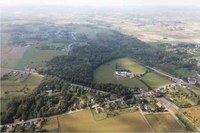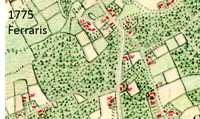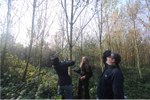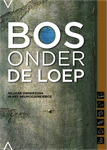Aelmoeseneie forest

The Aelmoeseneie forest is one of the few public forests of the region. It is property of Ghent University and managed by the Forest & Nature Lab.
Detailed information (in Dutch) about the Aelmoeseneie forest can be found at www.aelmoeseneiebos.ugent.be.
History

University forest

The arboretum with c. 65 tree and shrub species is used for the dendrology courses.
Scientific zone

This zone comprises two forest types: an oak-beech type (Quercus robur-Fagus sylvatica) on acid soil with a thick humus layer and a sparse herb layer, and an ash type (Fraxinus excelsior) characterized by fast nutrient cycling, a thin to absent humus layer and a diverse herb layer.
The scientific zone contains a Level I plot, a Level II plot, and a measuring tower. The Level I and Level II plots are part of the International Co-operative Program on the assessment and monitoring of air pollution effects on forests (ICP-plots, UN/ECE).

For example, the spatial variability of throughfall water and canopy exchange processes have been measured in detail.
An overview of all studies is available in Dutch. For an overview of the study locations in the entire forest and a list of the scientific publications of studies in the Aelmoeseneie forest, see www.aelmoeseneiebos.ugent.be (in Dutch, but with extended abstracts for each publication in English).
Measuring tower
In the scientific zone, a 35 m high meteorological tower was set up in 1993. The tower allows the measurement of several meteorological parameters (precipitation, wind velocity, wind direction, net radiation, PAR, temperature, …) at five different height levels within and above the forest canopy (7, 14, 21, 28, 35 m). The measuring tower is located between an oak, beech and ash tree, at the border between the two forest types in the scientific zone.
Recreation
The Aelmoeseneie forest is one of the few public forests of the region. It borders on the villages of Gontrode and Landskouter. A circular walking route and several footpaths are open to the public. You can make a virtual walk through the Aelmoeseneie forest and download the mapped walk via the website www.aelmoeseneiebos.ugent.be (in Dutch).
Management
In 2006-2007, ForNaLab wrote a detailed management plan for the Aelmoeseneie forest and some small, nearby forest parcels. The management plan was drawn up in consultation with the other three forest owners involved and the neighbours of the forest.
A detailed forest management plan consists of a description of the juridical and actual condition of the forest, the management goals, and the management means that will be used to reach these goals. The forest management plan of the Aelmoeseneie forest gives an overview of the management measures that will be applied in the period 2007–2027 to reach the described goals: which measures will be used, where, and when.
You can download the management plan and the associated maps (PDF) (in Dutch).

The management of the Aelmoeseneie forest aims at developing an uneven-aged high forest with a well-developed tree layer, shrub layer, and regeneration of native deciduous species. Between the replanting of the forest in 1921 and the end of the 1990s, few trees were cut. Consequently, a large part of the Aelmoeseneie forest was even-aged high forest with a dominant tree layer and a poorly developed shrub layer. The forest edges are managed as coppice or borders of flowering shrub species to increase the forest’s biodiversity and for reasons of security. Tall trees next to public roads, railways, or houses do carry a risk as they might blow down.
FSC certificate

Book Aelmoeseneie forest

For more information you can contact dr. ir. Margot Vanhellemont (Margot.Vanhellemont@UGent.be).
The book 'Bos Onder De Loep' costs € 15 and can be ordered via Academia Press.